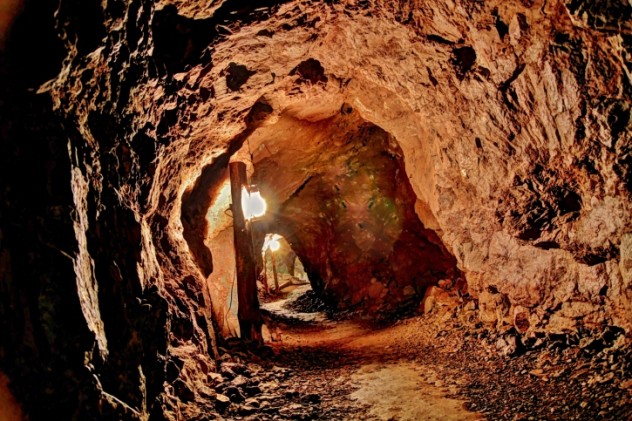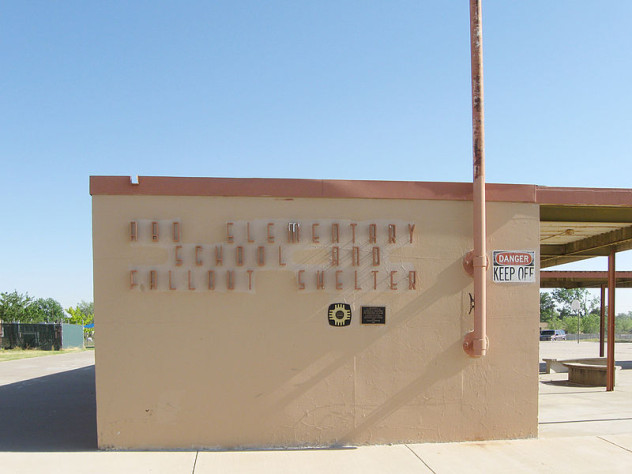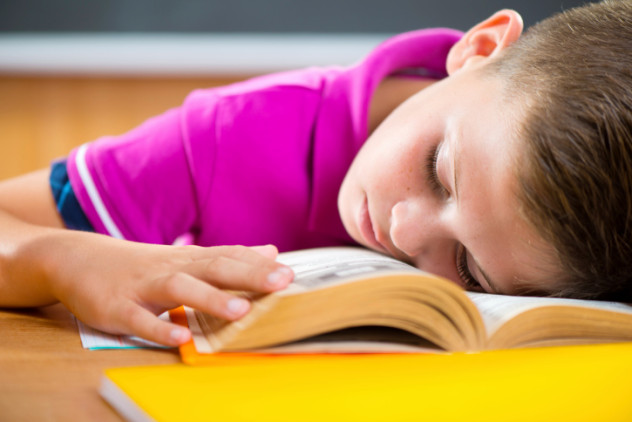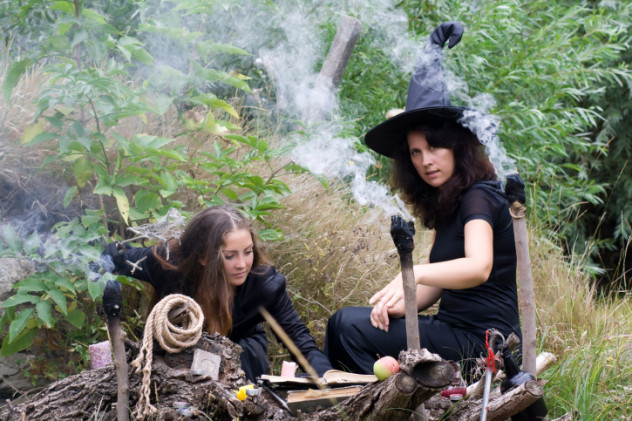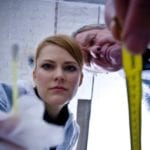10 Dongzhong Mid-Cave Primary School
The Dongzhong Mid-Cave Primary School is located in a cave in the mountainous Miao village in Guizhou province, China. Dongzhong itself means “in cave.” Guizhou is one of China’s poorest provinces and receives very little government support. Instead of using resources to build a free-standing school building, the community started the cave school in 1984 with eight teachers and 186 students. Some students spend up to six hours daily to travel to and from the school in the pursuit of knowledge, but some villagers have had concerns about the school being allowed to continue. Their fears were realized 23 years after the school opened when Chinese authorities closed the school. A government spokesperson said that the change was necessary because China isn’t a “society of cavemen.”
9 The Boat Schools Of Bangladesh
Twice a year, Bangladesh experiences floods which leave millions of its citizens without access to clean water, electricity, and other necessities. It becomes difficult for children to attend schools and for those schools to keep their doors open. To combat the challenges caused by the annual floods, a nonprofit organization called Shidhulai Swanirvar Sangstha came up with a brilliant solution. They built houses, health care centers, and schools that float. The nonprofit operates almost 100 boat schools. Each of these schools is solar powered and equipped with a laptop computer, Internet access, and a small library. The boat schools are a school and school bus hybrid. Whenever there’s a flood and every other service is closed for business, the floating schools are still operational. They pick their students up from docks and riversides, then dock somewhere so that class can begin. After the lessons are through, the boat schools return the students to their homes and another group of students is picked up. About 70,000 children have benefited from the boat schools since they were established in 2002.
8 The Train Platform Schools Of India
Whenever Inderjit Khurana took the train to work, she encountered several children begging train passengers for money instead of going to school. Khurana was a school teacher from Orissa, India, and she was sure that these children needed help if they were going to have a future at all. Since it was almost impossible to take these children to school, she decided to take the school to the children. This led to the formation of the Ruchika School Social Service Organization (RSSO) and the birth of the Train Platform School in 1985. Khurana began her project with just one school, but more than 4,000 students are being educated around India through the program. The schools cater to the needs of street children, child laborers, and children from poor families. The children gather between train stops to learn to read and write, and they learn through the use of field trips, flashcards, songs, drama, music, and puppetry. They are allowed to leave the program or resume whenever the choose. Khurana also realized that it would be difficult to educate the children without meeting the needs of their entire families, so the RSSO also provides food and medication.
7 Abo Elementary School
Abo Elementary School takes pride in being the first underground school in the United States. At the height of the Cold War as the United States came close to engaging in nuclear warfare with the Soviet Union, President John F. Kennedy swore that he would establish public and private structures that could serve as nuclear fallout shelters. Artesia, a town in New Mexico, felt it would be attacked due to its refinery and proximity to White Sands Missile Range and the now-abandoned Walker Air Force Base. They decided to build an underground school that would also function as a shelter. The school is completely underground. A playground was built on its roof. The school has three different entrances, each of which is protected by an 800-kilogram (1,800 lb) steel blast door. It’s also equipped with decontamination showers. The school is reportedly capable of resisting radiation and withstanding a 20-megaton blast. In its day, it had a morgue, a generator, a well, its own ventilation system, and stockpiles of food and medication. Despite all of this, many of its students had no idea that they attended elementary school in a bomb shelter. Fortunately, Abo Elementary School was never utilized as a bomb shelter. It was closed in 1995 because of increasing maintenance costs.
6 Gulu Elementary School
Gulu is a little-known village located in mountainous Hanyuan County, Sichuan Province, China. The only way to get to the village is through the Luoma Way, which is filled with zigzag turns, narrow passages between rock walls, and rickety bridges. Hidden in one of the mountains is the Gulu Village Primary School. The school has been around since the late ’80s and is run by a single teacher, Shen Qijun. Qijun came to Gulu Village when he was 18 years old. Back then, the school was in a pitiful condition and didn’t even have plumbing. Shen rallied the villagers after a student fell and was injured while trying to get to a toilet elsewhere on the mountain, and they collectively renovated the school—and added a toilet! The renovation also included a basketball court, which was made with unused blackboard. The students have to be careful when using it, though, in case they accidentally throw the ball off the side of the mountain.
5 Harvey Milk High School
Harvey Milk High School in New York is named after the famed gay rights activist and politician, Harvey Milk. It was built to cater to the needs of lesbian, gay, bisexual, transgender, and questioning students who are likely to be marginalized and discriminated against in regular schools. The school states that its doors are open to any student irrespective of their sexual orientation or identity. The school began to assist runaways and other at-risk teens in attaining a GED in 1985 as an institution under the Hetrick-Martin Institute, and officially began granting high school diplomas in 2003. The school came heavy criticism by the anti-gay public in 2003, and students faced chants of “Die, fags!” and other cruelties by protesters at the entrance as they began their school days. The school has even faced lawsuits seeking an end to government funding for the school.
4 Trabajo Ya
Prostitution is legal in Spain. There are between 200,000 and 400,000 prostitutes in Spain today. A school called Trabajo Ya, which means “Work Now,” opened in Valencia to teach prostitutes the most effective tricks of the trade. The school offers a “basic course in professional prostitution with maximum discretion.” They created an ad calling for people to apply for their classes knowing that the profession is profitable and offers instant employment for both sexes. The training lasts for one week and involves classes in both theory and practice. For €100 (about $120), students are given lessons on the history and evolution of prostitution as well as business skills. They hold daily two-hour practical skill sessions during which students learn the ins and outs of sex toys and familiarize themselves with the Kama Sutra. Unsurprisingly, the school came under a lawsuit by people who objected to its practices. A judicial inquiry launched an investigation into the school’s activities, and officials agreed that the school does not promote prostitution. Fortunately for Trabajo Ya, the school continues to operate.
3 The Philadelphia School Of The Future
The West Philadelphia School of the Future was opened in 2006. The school does not require students to have books. Instead, students use computers. Mathematics is taught with OneNote, a note-taking app, and teachers use computerized smart boards instead of traditional dry-erase or blackboards for instruction. Students use digital lockers that open with the flash of an ID card. The school faced several challenges soon after it opened. There were leadership problems. Students were also not yet technically efficient enough to jump in the deep end of going digital. The teachers had problems incorporating the desired level of technology into the classroom, and the school did not meet the educational and assessment standards required by the district. Since the early struggles, the school has been deemed a success. Students score high marks in mathematics and reading, and enrollment—which is determined by lottery—at the futuristic school is highly sought after. Familiarity with Microsoft Office and other programs gives students a higher chance of employment after graduation. Rather than using the normal letter grading scale, the school uses grades ranging from “Advanced” to “Not on the Radar.” The schedule begins at 9:00 AM and ends at 4:00 PM to replicate a normal work day instead of a typical school day.
2 Brooklyn Free School
Brooklyn Free School is divided into two. The upper school for children between the ages of 11 and 18, and lower school for students between the ages of 4 and 11. There is no curriculum. Students are allowed to choose any class they want and are allowed to stay away from school if they wish. The students make the school rules. Some students might decide to be alone and carry out independent studies, which could last years. Some students might decide to play, wander around, or just nap. There are classes such as “The Wire and Urban Studies” where students watch and then discuss the TV show The Wire. In another class, students compare restaurants around the town before going to eat in those restaurants. Every week, meetings are held to decide how the school operates, from how the school should be managed to how students should be admitted. There are no tests, homework, or grades. If a student wants to, he can call a meeting and discuss ideas with the whole school. Classes are run by students while the teachers act as moderators. According to the principal, the school expects every student to find his or her own way. Brooklyn Free School’s model has been criticized because of its lack of curriculum.
1 Witch School
Witch School teaches about witchcraft to budding witches worldwide. While the majority of its 40,000 students take their courses online, it has a physical location where students can also take classes in person. The school building was initially located in Roseville, Chicago, where it stayed for two years before moving to Salem, Massachusetts, the same town where about 200 people accused of witchcraft faced trials and execution between 1692 and 1693. The move from Roseville to Salem became necessary because the school came under fire from Christians who organized protests and sprinkled holy water on the wheels of the cars driven by the witches. Others sprinkled holy water on their own cars for protection. Salem was chosen because it has its own witch community and is generally witch-friendly. Elizabeth is an aspiring writer and blogger.
